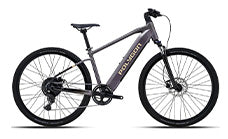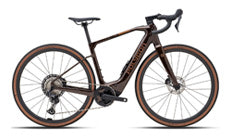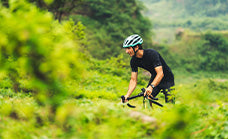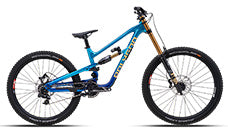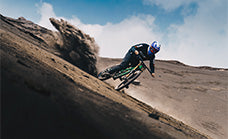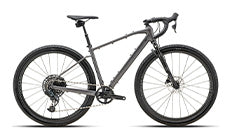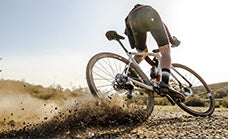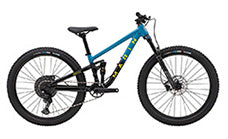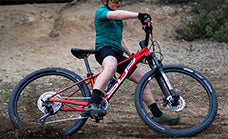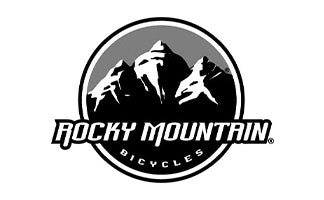Maximising Your Ride: Essential Fitness and Training Tips for Mountain Biking
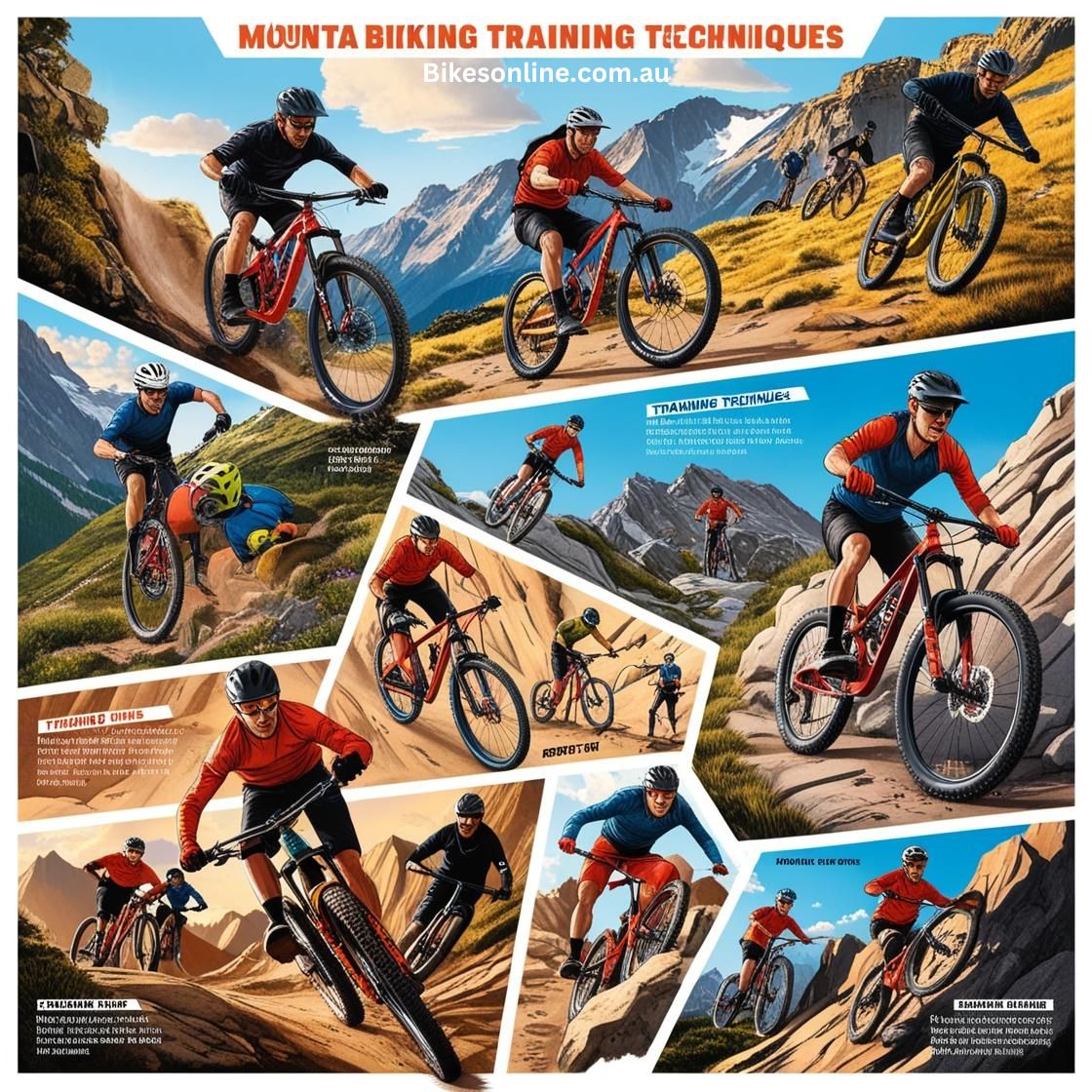
Mountain biking stands as a premier fitness-intensive sport, captivating enthusiasts with its thrilling blend of adventure, physical challenge, and exposure to breathtaking natural landscapes. It's not merely about pedalling through rugged terrains and scenic trails; mountain biking demands a high degree of physical fitness, coordination, and mental resilience. This sport not only hones one's ability to endure physically demanding situations but also sharpens reflexes and improves overall body strength.
Targeted training is crucial for both the novices and seasoned mountain bikers alike. It equips riders with the necessary skills to navigate diverse and often unpredictable terrains safely and efficiently. By focusing on specific training regimens—encompassing cardiovascular endurance, strength, flexibility, and technical skills—riders can significantly boost their performance and reduce the risk of injuries. Whether aiming to conquer steep hills or navigate tricky descents, tailored training prepares mountain bikers to face the rigours of the sport with confidence and finesse. Such preparation not only enhances the riding experience but also ensures safety, making each ride both enjoyable and secure.
The Foundation of Mountain Biking Fitness
Cardiovascular Endurance
Cardiovascular fitness is the cornerstone of mountain biking performance. For mountain bikers, the ability to sustain prolonged physical effort at varying intensities is paramount. Effective cardiovascular conditioning translates to better oxygen delivery throughout the body, enabling riders to maintain high levels of effort without succumbing to fatigue. This is especially critical when tackling long climbs and during extended rides where endurance can make the difference between a satisfying ride and a potentially exhausting ordeal.
Top Cardio Exercises for Mountain Bikers:
- Cycling Intervals:
- Description: Short bursts of intense effort followed by a period of low intensity or rest.
- Benefits: Improves both aerobic and anaerobic fitness, increases lactate threshold, and teaches the body to recover quickly.
- Example Workout: After a warm-up, alternate between 1 minute of high-intensity cycling and 2 minutes of low-intensity cycling for 30 to 60 minutes.
- Hill Sprints:
- Description: Short, intense efforts up a steep incline.
- Benefits: Builds power and explosive strength, crucial for quick accelerations and steep climbs.
- Example Workout: Find a hill that takes about 30-60 seconds to climb. Sprint up the hill, then slowly ride back down for recovery. Repeat 5-10 times depending on fitness level.
- Steady-State Rides:
- Description: Long rides at a consistent, moderate intensity.
- Benefits: Enhances fat utilization as a fuel source, builds endurance, and improves cardiovascular efficiency.
- Example Workout: Ride at a moderate pace (where conversation is possible but not easy) for 1-3 hours, depending on fitness level.
Incorporating these exercises into a mountain biking training regimen will significantly boost cardiovascular capacity, thereby enhancing overall riding performance and endurance.
Stability and Strength
Core Strength in Mountain Biking
Core strength is vital for mountain bikers, as it directly influences balance, bike control, and the efficiency of power transfer from the body to the bike. A strong core stabilizes the torso, maintaining an optimal riding position even on challenging terrains. This stability is crucial for executing sharp turns, maintaining balance on uneven surfaces, and absorbing shocks during rough descents. Moreover, a robust core reduces the strain on the arms and legs, which can prevent fatigue and allow for more controlled and extended rides.
Core Strengthening Exercises:
- Planks:
- Description: Maintain a push-up position while resting on forearms on the ground.
- Benefits: Strengthens the abdominals, back, and shoulders.
- Variations: Side planks to target obliques, raised-leg planks for added intensity.
- Bridges:
- Description: Lying on your back with knees bent, lift the hips while keeping the back straight.
- Benefits: Strengthens lower back and gluteal muscles, crucial for powerful pedaling.
- Variations: Single-leg bridges for an added challenge and greater stability training.
- Pilates:
- Description: A series of movements and poses that focus on core strength, posture, and flexibility.
- Benefits: Enhances core strength and overall body alignment, improving efficiency and reducing injury risk.
- Recommended Routine: Incorporate exercises like the Teaser, Roll-Up, and Saw into regular training sessions.
Flexibility and Mobility
Flexibility and mobility are also essential for mountain bikers. Enhanced flexibility improves overall mobility on the bike, allowing riders to adopt more aggressive and aerodynamic positions. It also aids in muscle recovery and reduces the risk of strains and sprains.
Benefits of Flexibility in Mountain Biking:
- Allows for a fuller range of motion during pedaling, which can improve pedaling efficiency.
- Decreases the risk of injuries by preparing the muscles and joints for the dynamic actions involved in mountain biking.
- Enhances recovery post-ride by alleviating muscle tightness and promoting circulation.
Recommended Stretching Routines and Yoga Poses:
- Dynamic Stretches Pre-Ride:
- Examples: Leg swings, arm circles, and torso twists.
- Benefits: Prepares the body for the activity ahead by warming up the muscles.
- Yoga Poses for Flexibility:
- Downward-Facing Dog: Stretches the hamstrings, calves, and spine.
- Warrior Poses: Improve leg strength, flexibility, and balance.
- Pigeon Pose: Excellent for opening up the hip flexors and glutes, areas that are typically tight in cyclists.
- Static Stretches Post-Ride:
- Examples: Toe-touches, quad stretches, and calf stretches against a wall.
- Benefits: Helps in muscle recovery and reduces stiffness by elongating the muscles after riding.
Incorporating these exercises into a mountain biker’s routine will not only boost performance but also enhance enjoyment of the sport by keeping the body responsive and resilient.
Training Techniques for Peak Performance
High-Intensity Interval Training (HIIT)
High-Intensity Interval Training (HIIT) offers immense benefits to mountain bikers, primarily by improving both aerobic and anaerobic fitness levels. HIIT involves short bursts of intense activity followed by a period of rest or lower-intensity exercise. This training method is especially beneficial for mountain biking, which often requires sudden bursts of power to overcome steep inclines or technical sections of a trail.
Benefits of HIIT for Mountain Bikers:
- Increases Power: Boosts cycling power and speed by enhancing fast-twitch muscle fiber performance.
- Enhances Endurance: Improves the ability to sustain high-intensity biking efforts and recover quickly.
- Burns Fat Efficiently: High-intensity workouts can lead to higher calorie burn in a shorter period, helpful for weight management.
Sample HIIT Workouts for Various Fitness Levels:
- Beginner:
- Structure: 30 seconds of intense pedaling followed by 1 minute of slow pedaling. Repeat for 15 minutes.
- Focus: Building endurance and getting used to HIIT pacing.
- Intermediate:
- Structure: 45 seconds of intense pedaling with 1 minute of moderate pedaling. Repeat for 20-30 minutes.
- Focus: Increasing effort periods to boost anaerobic threshold.
- Advanced:
- Structure: 1 minute of all-out effort followed by 1 minute of rest. Repeat for 30 minutes.
- Focus: Maximizing both effort and recovery to mimic challenging trail conditions.
Resistance Training
Strength or resistance training is essential for mountain bikers, as it builds the muscular strength and endurance required to effectively handle long rides and demanding trails. Focusing on the legs, arms, and back ensures that bikers have the strength to pedal efficiently, control the bike during technical maneuvers, and endure the physical demands of mountain biking.
Exercises to Build Leg, Arm, and Back Strength:
- Legs:
- Squats and Lunges: Build power and endurance in the quads, glutes, and hamstrings.
- Leg Press: Focuses on quad strength and can translate to stronger pedaling.
- Arms:
- Pull-Ups and Chin-Ups: Improve grip strength and upper body endurance.
- Dumbbell Curls and Tricep Extensions: Enhance arm strength for better bike control.
- Back:
- Deadlifts: Target the lower back, essential for maintaining proper biking posture.
- Rowing Exercises: Strengthen the upper back and shoulders, which are crucial for bike handling.
Cross-Training Options
Incorporating different sports into a training regimen can prevent burnout, reduce the risk of overuse injuries, and improve overall fitness by challenging the body in new and varied ways.
Advantages of Cross-Training:
- Enhances Overall Fitness: Engaging in various sports can lead to better general fitness, agility, and endurance.
- Reduces Injury Risk: Diversifying the types of physical activity can lower the risk of strain and overuse injuries common in repetitive sports.
- Improves Weak Areas: Cross-training can strengthen muscles that are not typically used in cycling, providing better overall balance and strength.
Cross-Training Activities:
- Swimming: Builds cardiovascular fitness and is excellent for recovery due to its low-impact nature.
- Running: Improves endurance and leg strength, beneficial for long climbs.
- Rock Climbing: Enhances grip strength, upper body strength, and problem-solving skills, valuable for technical trails.
By integrating these advanced training techniques, mountain bikers can achieve peak performance, ensuring they are as prepared as possible for whatever the trails might throw their way.
On-Trail Training Practices
Skill Drills for Technical Proficiency
Improving technical proficiency through on-trail training is crucial for mountain bikers looking to enhance their balance, control, and agility—key components that affect riding performance and safety. Skill drills not only refine a rider's technique but also boost confidence on challenging terrains.
Essential Drills to Improve Balance, Control, and Agility:
- Track Stands:
- Description: Balancing on the bike without moving, usually done when stationary.
- Purpose: Improves balance and body-bike coordination, useful for technical climbs and navigating obstacles.
- Figure Eights:
- Description: Riding in tight figure-eight patterns.
- Purpose: Enhances steering control and body positioning, crucial for navigating tight turns.
- Bunny Hops:
- Description: Lifting both wheels off the ground simultaneously.
- Purpose: Develops the ability to hop over obstacles like roots and rocks without dismounting.
Practice Techniques for Downhill and Uphill Riding:
- Downhill Riding:
- Focus: Body positioning and brake control.
- Drill: Practice descending on varying slopes while adjusting body weight rearward and modulating brake use to maintain control without skidding.
- Uphill Riding:
- Focus: Efficient pedaling and momentum management.
- Drill: Tackle repeated short climbs focusing on maintaining a steady cadence and using the appropriate gear to maximize efficiency without overexertion.
Nutrition and Hydration for Long Rides
Proper nutrition and hydration are pivotal for maintaining peak performance during long mountain biking rides. They not only fuel the ride but also impact recovery and subsequent performance.
Guidelines for Pre-Ride, During, and Post-Ride Nutrition:
- Pre-Ride:
- Food: Consume a meal rich in complex carbohydrates and protein 2-3 hours before riding to ensure a steady energy supply. Examples include oatmeal with nuts and berries, or a whole-grain sandwich with lean protein.
- Hydration: Drink 500-600 ml of water an hour before starting to ensure proper hydration without feeling bloated.
- During the Ride:
- Food: Use energy bars, gels, or even a small sandwich with peanut butter and banana for longer rides. It's crucial to intake some form of carbohydrate every 45 minutes to maintain energy levels.
- Hydration: Drink small sips of water or an electrolyte replacement drink regularly to replace fluids lost through sweat.
- Post-Ride:
- Food: Within 30 minutes of finishing your ride, consume a mix of carbohydrates and protein to aid in muscle recovery. A protein shake with a banana or a yogurt with fruit are good options.
- Hydration: Continue to rehydrate with water or an electrolyte drink, especially if another ride is planned soon after.
Hydration Strategies to Maintain Peak Performance:
- Consistency is Key: Regular sips during the ride prevent dehydration, which can lead to decreased performance and increased fatigue.
- Electrolytes Matter: For rides lasting longer than an hour, include an electrolyte drink to replace sodium and other key minerals lost through sweat.
- Monitor Hydration Status: Pay attention to urine color as an indicator of hydration levels; pale yellow means well-hydrated, while a darker color suggests a need for more fluids.
By focusing on these on-trail practices and nutritional strategies, mountain bikers can significantly improve their performance and endurance, making each ride more effective and enjoyable.
Recovery and Rest
Importance of Adequate Rest
Rest is a critical component of any training regimen, especially in a physically demanding sport like mountain biking. Adequate rest is essential for muscle repair, growth, and overall recovery, which are necessary for performance improvements and injury prevention.
How Rest Contributes to Muscle Repair and Growth:
- Muscle Recovery: During rest periods, the body repairs the micro-tears in muscle fibers caused by intense physical activity. This process is crucial for muscle growth, strength gains, and endurance improvements.
- Hormonal Balance: Rest helps maintain a balance of stress and growth hormones, such as cortisol and testosterone, which are pivotal for recovery and muscle development.
- Energy Replenishment: Rest allows the body to replenish glycogen stores, which are the primary energy source during high-intensity activities like mountain biking.
Signs You Might Be Under-Recovering:
- Persistent Fatigue: Feeling unusually tired despite adequate sleep could indicate insufficient recovery.
- Decline in Performance: A noticeable decrease in performance levels or inability to complete usual training routines.
- Increased Incidence of Injuries: Frequent injuries or prolonged recovery from minor injuries can be a sign of inadequate rest.
- Mood Changes: Irritability or depression can also indicate that the body needs more time to recover.
Recovery Techniques
Effective recovery techniques can significantly enhance the quality of rest and ensure that mountain bikers are ready to perform at their best during each ride.
Effective Recovery Methods:
- Foam Rolling:
- Purpose: Helps in breaking down soft tissue adhesions and reducing muscle tightness.
- Method: Focus on major muscle groups used in biking like the calves, quads, and back. Roll slowly and pause at spots of intense tenderness.
- Massage:
- Benefits: Increases circulation, reduces muscle tightness, and promotes relaxation.
- Recommended Practice: Professional massages are ideal, but self-massage or using tools like massage guns can also be beneficial.
- Adequate Sleep:
- Importance: Sleep is perhaps the most critical recovery tool, as it is when most of the body’s healing processes occur.
- Guidelines: Aim for 7-9 hours of quality sleep per night to support optimal recovery.
Tips for Incorporating Rest Days into Your Training Schedule:
- Schedule Regularly: Plan at least one full rest day per week and consider active recovery days where only light, non-strenuous activity is performed.
- Listen to Your Body: Pay attention to the signs of under-recovery and adjust your training and rest days accordingly.
- Diversify Activities: On active recovery days, engage in activities that are less intense but still keep the body moving, like walking or gentle yoga, to promote circulation without excessive strain.
By recognizing the importance of recovery and implementing these techniques, mountain bikers can maintain a high level of performance while avoiding burnout and injuries, ensuring they can continue to enjoy and excel in their sport.
Conclusion
Mountain biking is a demanding sport that requires a robust blend of strength, endurance, technical skills, and tactical intelligence. We've explored the essential components of mountain biking fitness, from building cardiovascular endurance through HIIT and steady-state rides to enhancing muscle strength and flexibility with resistance training and yoga. The discussed training techniques not only prepare your body for the rigors of the trail but also optimize your performance to tackle even the most challenging terrains.
Skill drills specific to mountain biking, such as track stands and bunny hops, improve your technical proficiency, enabling greater control and safety during rides. Nutrition and hydration play critical roles in fueling your rides and aiding recovery, ensuring you can push harder and recover faster. Furthermore, the importance of recovery—through methods like foam rolling, massage, and sufficient sleep—cannot be overstated, as it allows your body to repair and grow stronger.
Now is the perfect time to start integrating these strategies into your training routine. Whether you're a beginner looking to get more comfortable on your bike or an experienced rider aiming to enhance your performance, these practices will help you achieve your goals. Remember, the journey to becoming a better mountain biker is continuous and evolving. Every ride is an opportunity to improve, learn, and enjoy the sport even more. So gear up, set realistic goals, and embrace the trails with confidence and renewed vigor.


